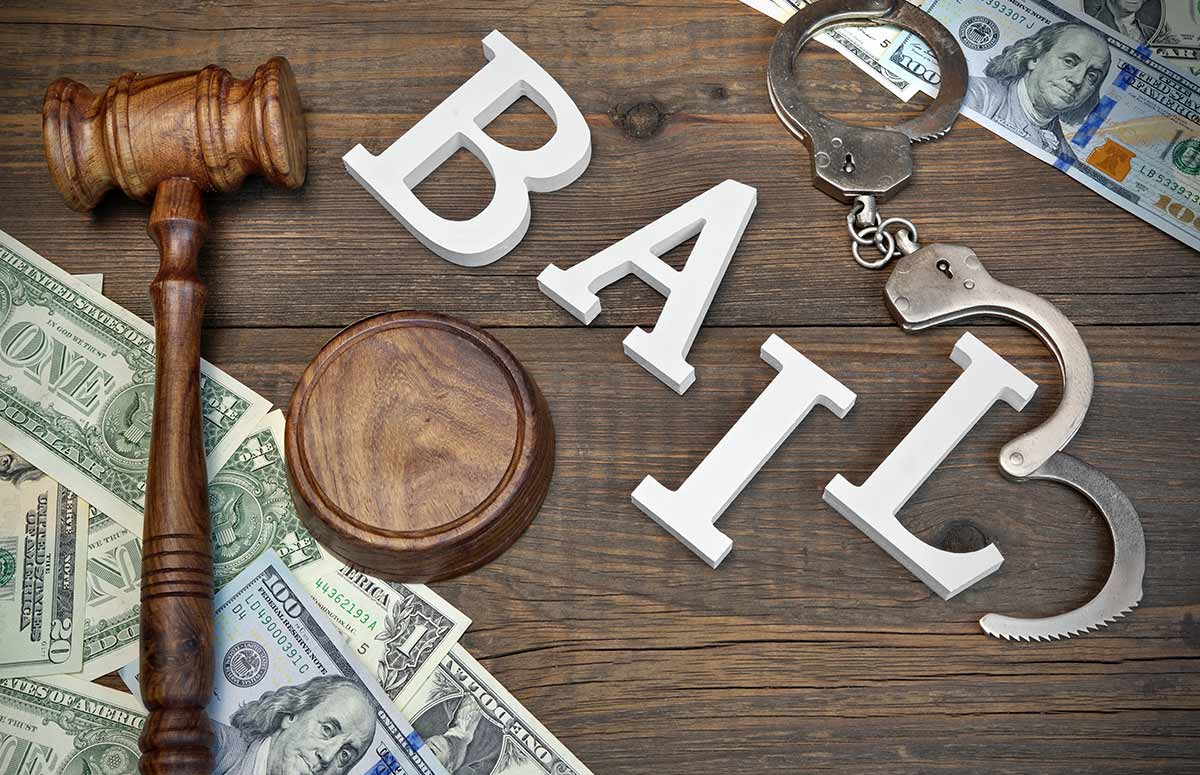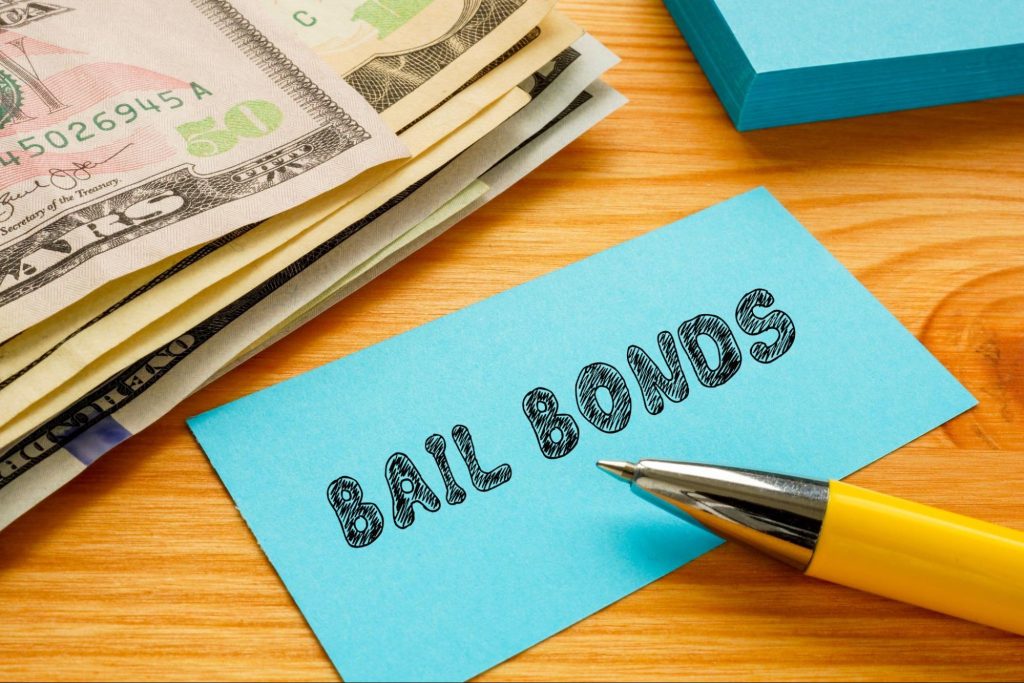Just How Bail Bonds Work: A Thorough Introduction
Bail bonds play a vital role in the legal procedure by giving a mechanism for people to safeguard their release from custodianship while waiting for trial. Comprehending the ins and outs of just how bail bonds function, consisting of the duties of courts, bail bondsmen, and the various fees included, can be crucial for anyone navigating this complicated system.
What Are Bail Bonds?
Bail bonds are usually utilized in the criminal justice system as a financial assurance that an implicated person will certainly show up in court as called for. When an individual is arrested, a judge may set a bail amount based on different aspects, consisting of the intensity of the crime, the offender's criminal background, and the threat of trip. If the charged can not afford the bail quantity, they might look for the aid of a bond bondsman.
A bail bond is a contract between the defendant, the bail bondsman, and the court, ensuring that the offender will certainly accomplish their lawful responsibilities. In exchange for a fee, generally a percentage of the total bail quantity, the bondsman offers the court with a surety that assures the bail. If the charged falls short to appear in court, the bail bondsman is in charge of paying the full bail total up to the court, which may lead them to go after the defendant for recovery.
Bail bonds serve to help with the release of people waiting for trial, permitting them to keep their employment and family duties while making certain conformity with court appearances. This system is indispensable to stabilizing the legal rights of the accused with the passions of public security and judicial integrity.
The Bail Process Clarified
After comprehending the role of bail bonds in the criminal justice system, it is very important to outline the bail process itself. The bail process starts when an individual is jailed and collared. Adhering to the arrest, the accused is generally brought prior to a court for an initial hearing, where the court will certainly identify whether to provide bail and established the amount.
If bail is provided, the defendant has numerous options to protect their launch. They may pay the complete bail amount in money, which is returned upon the conclusion of their court responsibilities. Conversely, the defendant can look for the aid of a bondsman, that bills a non-refundable fee-- typically a percent of the total bail quantity-- to upload bail on their behalf.
As soon as bail is posted, the accused is launched from custody with the understanding that they should go to all set up court looks. Failing to appear can lead to the forfeit of the bail and added lawful effects. The procedure concludes when the case is fixed, at which aim the bail is either returned or preserved by the bail bondsman as settlement for their solutions.

Sorts Of Bail Bonds
When it comes to protecting a release from custodianship with bail bonds,Many choices exist. Comprehending the different types can help defendants and their families make informed selections.
One of the most usual kind is the surety bond, which includes a third-party bail bondsmansman that assures the complete bail total up to the court in exchange for a non-refundable fee, typically around 10% of the bail quantity. This choice is widely used as a result of its access for people who may not have the economic methods to pay the full bail upfront.
An additional kind is the money bond, where the defendant or a co-signer pays the complete bail quantity in cash money directly to the court. Upon successful conclusion of the situation, the funds are refunded, minus any applicable charges.

Last but not least, migration bonds are particularly designed for people apprehended by immigration authorities, promoting their launch while they await lawful procedures. Each kind of bail bond offers distinct objectives, satisfying various circumstances and requires within the legal system.
Variables Impacting Bail Expenses
Several vital elements affect the general cost of bail, determining just how much an offender or their household might need to pay for release. Among the primary variables is the seriousness of the costs. Felony fees typically lead to greater bail quantities compared to violations as a result of the viewed threat of flight and the prospective effects of the violation.

Courts may think about an accused's earnings and possessions when figuring out bail, potentially leading to higher costs for those with greater financial resources. If a bail bondsman perceives a greater threat, they might establish a greater premium, additional enhancing the expenses associated with securing a bail bond.
Responsibilities of the Indemnitor
Once bail has actually been protected, the obligations of the indemnitor, or the individual who accepts back the bail bond, come right into play. The indemnitor is mostly accountable for making sure that the accused attends all set up court looks. Failure to do so may cause the loss of the bail bond and prospective legal effects for the indemnitor.
In addition, the indemnitor is bound to pay back the bail bond company the total of the bond if the defendant falls short to show up in court. This includes any kind of costs or costs incurred by the bail representative in recuperating the defendant, which might better escalate the monetary burden on the indemnitor.
The indemnitor must also preserve open communication with both the bail and the accused bail bondsman, supplying any type of required updates connected to the defendant's scenario. It is crucial for the indemnitor to stay conscious of the lawful obligations and repercussions linked with the bail bond, as lack of knowledge might result in unintended responsibilities.
Conclusion
In recap, bail bonds click for more function as a critical system within the criminal justice system, facilitating the launch of offenders while ensuring their look in court. Understanding the various kinds of bail bonds, the complexities of the bail procedure, and the factors influencing bail prices is important for browsing this facility landscape. Additionally, understanding of the duties borne by the indemnitor highlights the significance of notified decision-making when involving with bail bond solutions.
Understanding the ins and outs of just how bail bonds function, including the functions of courts, bail bondsmen, and the different costs entailed, can be important for any individual browsing this intricate system.After recognizing the role of bail bonds in the criminal justice system, it is essential to describe the bail procedure itself. The offender can look for the assistance of a bail bondsman, who charges a non-refundable fee-- typically a portion of the overall bail amount-- to publish bail on their behalf.
If a bail bondsman perceives a higher risk, they may set a higher premium, further increasing the costs associated with securing a bail bond. Understanding the various kinds of bail look here bonds, the details of the bail procedure, and the aspects influencing bail costs is essential for navigating this facility landscape.
Comments on “Comprehending Your Rights When Using a Bail Bondsman”